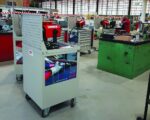Bullish sentiment dominates logistics
Business restrictions and border closures haven’t dampened the enthusiasm of Australian transport and warehouse operations with the latest CartonCloud Logistics Index (CCLI) showing high industry optimism and strong growth expectations. The second edition of the CartonCloud Logistics Index took the pulse of warehouse and transport businesses in the second quarter of 2021 with 52 survey respondents providing feedback on business operating conditions, workforce and hiring outlook, growth, opportunities and challenges. CartonCloud founder Vincent Fletcher said the latest CCLI provided deep insight into sentiment into the industry and the opportunities and challenges facing businesses. “The logistics industry continues to go from strength to strength and this quarter demonstrated high optimism for the current economic climate,” Mr Fletcher said. “Australia is relying on the local logistics industry now more than ever and that means more business, stable jobs and more growth opportunities. “Businesses are forecasting growth for the rest of 2021, although there’s slightly lower optimism for hiring compared to the first quarter. “The reduction in hiring expectations could be a consequence of COVID-19 restrictions and economic impacts, but it may also mean businesses have fulfilled the hiring intentions they had in the previous quarter. “Overall, the economic shifts, government stimulus and changes to business practices in response to the pandemic have had a neutral or slightly positive net impact on the logistics industry. “This has offset many of the negative effects from business restrictions and border closures. “The CCLI also put a spotlight on environmentally friendly practices in the industry and the Q2 results show a clear opportunity for improvement. “Switching to paperless technology is the most likely investment businesses are targeting to improve environmental practices. “The results of the index point towards a robust industry capitalising on economic conditions with strong confidence for the future.” STATISTIC SNAPSHOT Economic climate General […]










